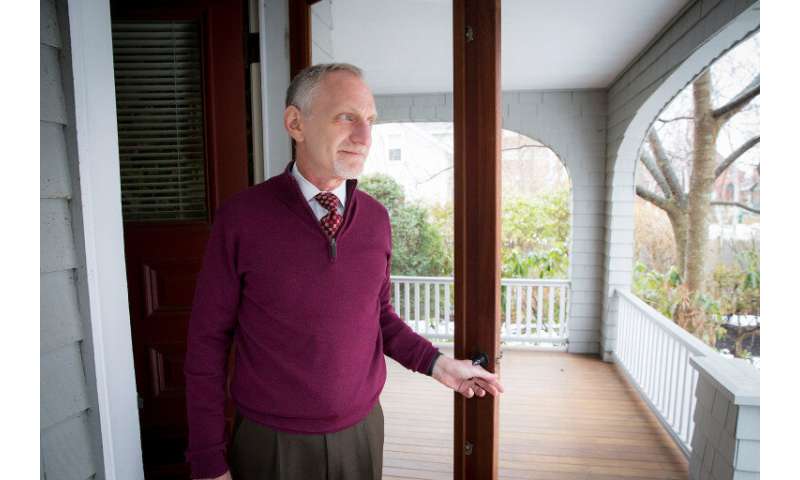
As the COVID-19 crisis has hammered America, its citizens have responded with the turtle defense. Encouraged by government stricture and rapidly evolving social norms, we’ve pulled heads, arms, and legs inside our shells, drawing away from potentially infected others, with the salutary side effect—should we be the sick ones—of also being unable to infect them.
But as we pull away, rising loneliness appears to be among a host of mental health impacts that are inevitable side effects. A Kaiser Family Foundation poll from late March showed that 45 percent of those surveyed reported mental health effects from the crisis, with 19 percent reporting a “major” impact. While social distancing’s physical isolation can enhance feelings of loneliness, experts also caution that isolation and loneliness are not the same thing. They also say, however, that there are things we can do to ease it, some of which may even help others.
“The experience of loneliness is 100 percent subjective,” said Jeremy Nobel of the Center for Primary Care at Harvard Medical School and adjunct faculty in the Department of Health Policy and Management at the Harvard T.H. Chan School of Public Health, where he teaches a course on loneliness and public health. “Isolation is the objective state of being physically separate. Loneliness is the self-perceived gap between our social connectedness and that which we aspire to have.”
While loneliness itself is not considered a mental illness, Nobel said it is a risk factor for depression, suicide, and addiction. He put its ill health effects on a par with smoking and obesity and said its physiological impacts include increased inflammation—which has been implicated in negative health consequences—and decreased immune response, both potentially important during pandemic times.
Karestan Koenen, a Harvard Chan School psychiatric epidemiologist and expert in the mental health impacts of trauma, said the pandemic’s loneliness-inducing effects may be particularly acute for those who lived alone even before the coronavirus hit.
“Loneliness is a big concern, especially for people already isolated,” she said. “We know it’s toxic to health, not just mental health but physical health.”
Robert Waldinger, professor of psychiatry at Harvard Medical School and Massachusetts General Hospital and head of the long-running Harvard Study of Adult Development, agreed that loneliness can impact health and warned that pre-existing conditions can further hamper one’s ability to get out and connect with others.
“We find that that people who are more connected are healthier and healthier people are more connected,” Waldinger said. “It’s bi-directional.”
Being alone and lonely can also result in a kind of emotional inertia, Waldinger said, which means it may take a force of will to reach out. It may help, Waldinger said, to first reach out to a friend you think may also be lonely.
“There’s inertia if you’re alone. You think, “People probably don’t want to talk with me.'”
Waldinger said. “Research has shown that human connection is a big way we get through tough times. We don’t do nearly as well isolated as we do together.”
Losing a loved one is trying during normal times and may be particularly difficult now, Waldinger said. The normal comfort of family coming together to grieve and support each other may be postponed or foregone entirely due to social-distancing concerns. The impact of grief compounded by isolation may be particularly hard on surviving husbands, since studies have shown that women are better at maintaining social networks and husbands often rely on those maintained by their wives.
Nobel, who recently founded The UnLonely Project and has responded to the pandemic with a “Stuck at Home (together)” website to provide free, arts-based support for those struggling with involuntary isolation, said that the creative arts have been shown to have remarkable health effects. Nobel has blogged about how to write your way out of loneliness and conducted studies that showed that the creative arts can be healing in surprising ways. He said the effect may be because creating forces one to focus on the moment and encourages one to express thoughts and feelings in a healthy way. An important aspect of using the arts to heal, he said, is sharing one’s creation—whether art, a poem, or a cooked meal.
“In the moment, you’re not worried about your 200 emails,” Nobel said. “Making art, even a doodle or an arranged bouquet of flowers, gives you an artifact you can share with another human being and that person can have some sense of you. It’s reliably powerful, like closing an electric circuit, and both people are connected.”
Unlike pandemics past, Nobel and Waldinger agreed that many of those social distancing at home have the benefit of technology to stay connected. Though physical presence can’t be entirely replicated—having someone with you in a doctor’s office, for example, is calming, Waldinger said—videoconferencing platforms such as Zoom provide ways to stay in touch and approximate in-person connectedness.
Source: Read Full Article
